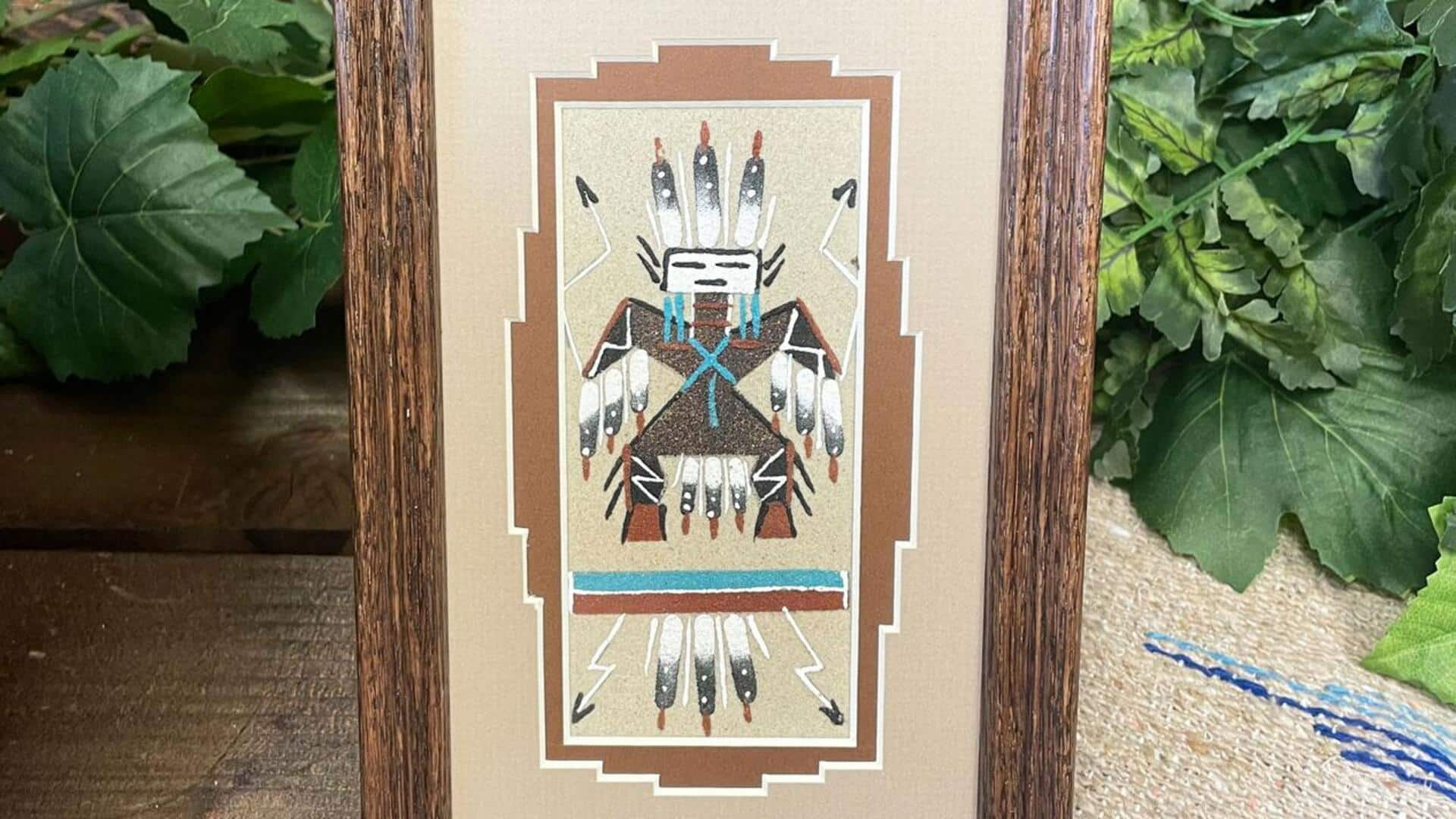
Discover the beauty of Navajo sand paintings
What's the story
Navajo sand painting is a traditional art form with cultural and spiritual importance. These intricate designs, originating from the Navajo people, are created using naturally colored sands. Not only are the paintings artistic expressions, but they also play a vital role in healing ceremonies. Each design tells a story or represents a specific aspect of Navajo mythology, making them an integral part of their cultural heritage.
Creation
The process of creation
The making of a Navajo sand painting is an exercise in meticulousness. Artists use natural materials such as crushed sandstone, charcoal, and pollen to produce vibrant colors. The process starts with the outline of the design on the ground. Thereafter, each section is carefully filled with colored sand. This requires steady hands and a lot of patience, as even a slight breeze can ruin the intricate patterns.
Symbolism
Symbolism in designs
Each element in a Navajo sand painting has a deep meaning. Sacred animals, deities, and natural elements like rainbows or mountains are common motifs. The symbols are selected based on their relevance to the ceremony being performed. For example, some designs may be used to invoke healing powers or protection for people involved in rituals.
Healing ceremonies
Role in healing ceremonies
Sand paintings are an integral part of traditional Navajo healing ceremonies, called chants. Medicine men create particular designs to correspond with specific ailments or spiritual needs during these ceremonies. The participants sit around the painting as prayers are recited over it. This is believed to restore balance between mind and body by connecting individuals to ancestral spirits through visual storytelling.
Preservation efforts
Preservation efforts today
Efforts to preserve Navajo sand painting are underway, struggling against the threat of modernization. Educational programs and workshops are being conducted to teach younger generations its importance, ensuring continuity without sacrificing tradition. They involve stakeholders around the world and locally, working together to protect this cultural heritage, contributing positively to society and nurturing appreciation for diversity and unity.